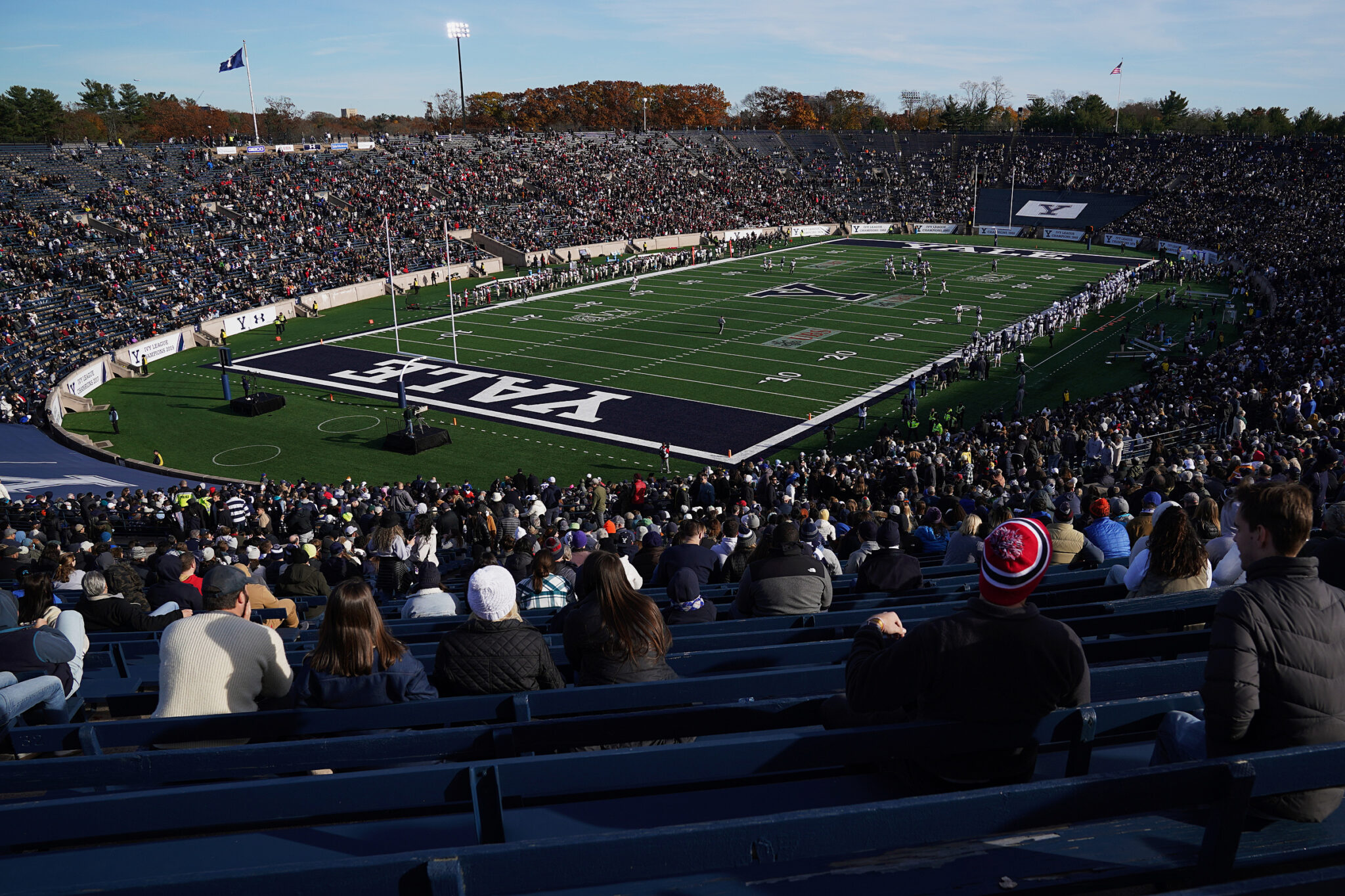The rules of football
The News brings all you non-football people an easy-to-read guide to the rules of the game.

Tim Tai, Senior Photographer
To the untrained eye, football can be a perplexing sight. Twenty-two men hurl themselves at a pigskin football in search of the coveted end zone. Fans roar with excitement, anxiety and disgust at their team’s performance. The game, nuanced with arbitrary rules and exceptions, occupies the minds of millions of Americans.
As the 139th playing of The Game unfolds at the Yale Bowl, football should not bamboozle Yale alumni, students or guests. This “how-to” guide demystifies football to its most basic foundations.
For Elis, this should come easily, as football is in our blood. Walter Camp, class of 1880, is widely known as the “Father of American Football” for the crucial role he played in establishing the rules of the game.
Football includes four 15-minute quarters, with a 20-minute break separating each 30-minute half of gameplay. The field stretches 120 yards in length and 53.3 yards in width, as 10-yard end zones fill the boundaries of each side of the field. While 60 minutes in length, The Game will last around 3.5 hours due to intermissions, timeouts and official reviews.
The objective of the game is to advance the ball into the opponent’s end zone, either via pass or run. The offense has four downs to move the ball 10 yards. Once they surpass the 10-yard threshold, a new slate of downs begins.
However, on fourth down, the offense can elect to risk possession of the ball for a first down or punt the ball away from their end zone.
The offensive side of the ball includes the quarterback, offensive linemen, wide receivers, running backs and tight ends.
The quarterback serves as the offense’s command center, dictating plays by throwing the ball to wide receivers or handing the ball off to a running back. For Yale, this is No. 12 Nolan Grooms ’24 who was last season’s Ivy League Offensive Player of the Year. The offensive linemen protect the quarterback from oncoming defenders before he launches the ball to his slate of receivers.
Wide receivers and tight ends play a hybrid role on the offense. They catch the ball from the quarterback during passing situations and block during running opportunities.
The defense attempts to stop the offense’s drive to the end zone. They intend to tackle opponents before they cross the first-down barrier. Watch out for two pivotal defensive plays.
An interception occurs when a defender snatches a pass from the quarterback intended for an offensive player. A fumble transpires when a defender punches away the ball from the ball carrier and recovers it. Both types of turnovers give the defensive team possession of the football.
The point system in football is quite simple. A touchdown, when the offense enters the endzone, provides six points to the offense. They are given the opportunity to kick a field goal through the uprights for one additional point or attempt to enter the endzone from the two-yard line for an additional two points.
When stopped before entering the endzone, the offense can elect to kick a field goal for an additional three points.
The rules of football are fairly simple when broken down. Hours of exhaustion, sweat and emotional distress culminate into a marvelous display.
So when Nolan Grooms passes to Mason Tipton ’24 for a touchdown, you should understand the cacophony of cheers in the Yale Bowl.
Yale is set to play Harvard at noon on Saturday, Nov. 18.







